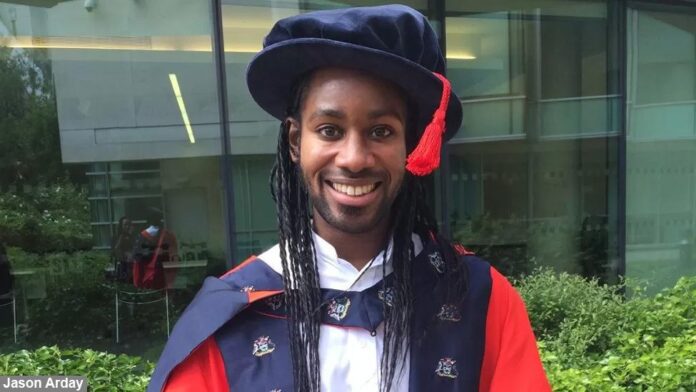As a 40-plus-year-old Black man who was born and raised in the UK. I understand the importance of representation in the fields of academia, business, and sports. Growing up, I was inspired by some of the greatest engineering feats accomplished by British engineers. This drove me to pursue a degree in Automotive Engineering and later a PhD in the same field.
However, during my academic journey, I found myself feeling increasingly isolated. I had no one to look up to who looked like me or who could relate to my experiences. This sense of loneliness is a common issue experienced by many people of colour in higher education, business, and sports.
The lack of representation has been a persistent issue in these fields, perpetuating a cycle of exclusion that affects both individuals and institutions. That is why the appointment of Jason Arday as Cambridge University’s youngest black professor is a powerful milestone that gives hope that progress is being made.
According to this BBC article, there are currently only five Black people who are professors at Cambridge University. Furthermore, official figures from the Higher Education Statistics Agency show that in 2021, just 155 of the more than 23,000 university professors in the UK were Black.
The appointment of Arday is a significant step towards a more diverse and inclusive higher education system. Especially at one of the best universities in the UK.

The Importance of Diversity in Higher Education
Creating a diverse and inclusive environment in higher education institutions is critical to fostering a welcoming community for all students and staff. Institutions that fail to prioritise diversity and inclusion perpetuate a cycle of exclusion that can affect both academic performance and the success of faculty and staff.
Despite some progress in recent years, the lack of diversity remains a persistent issue in higher education. Figures show that in the UK, only 1.2% of professors are Black, while just 20% are women. These numbers demonstrate that there is still much work to be done to address systemic issues that limit representation and create a more equitable and inclusive academic environment.
Institutions can take a variety of steps to foster diversity, including implementing mentorship and sponsorship programs, providing unconscious bias training, and targeted recruitment efforts. These initiatives can help attract and retain talented individuals from diverse backgrounds, ultimately leading to a more dynamic and productive academic community.
The Lack of Diversity in the Workplace
The lack of diversity is not just a problem in higher education but is also evident in the workplace. In the City of London, for instance, the percentage of Black and Minority Ethnic (BME) individuals in top management positions has stagnated.
With only 6% of executive committee members in UK banks and insurers being of BME origin. This underrepresentation is perpetuated by the “old boys’ club” mentality. Which limits access to top jobs for those who do not fit the mould of a typical leader.

Diversity in Sports
Similarly, the lack of diversity in sports management is a topic that has been receiving more attention in recent years. In football, for example, only six of the 92 clubs in the English Football League have a Black, Asian, or Minority Ethnic (BAME) manager in 2021.
While there has been some progress in recent years, the lack of representation in football management limits opportunities for individuals from diverse backgrounds to progress in the industry.
Conclusion on Diversity in Higher Education
The lack of diversity in higher education, business, and sports prolongs a cycle of exclusion that affects both individuals and institutions. To create more inclusive environments that foster diversity, equity, and inclusion; academic institutions, companies, and sports organisations need to take action to address systemic issues that limit the representation of people from diverse backgrounds.
This can be achieved through initiatives such as mentorship and sponsorship programs, unconscious bias training, and targeted recruitment efforts. As the youngest Black professor at Cambridge University, Jason Arday’s appointment is an important milestone in promoting diversity in higher education.
His achievement serves as an inspiration for other Black individuals and people of colour who aspire to become leaders in academia. The appointment also highlights the need for more diversity in academic leadership positions.
Metaphorically speaking, diversity is like a garden that needs constant care and attention to thrive. Without proper nurturing, the garden will wither and die. Similarly, without proper attention and support, diversity in higher education and other areas will remain a struggle. As a society, we must work together to cultivate a garden of diversity that reflects the richness and variety of our world.
Sorry; with Ghana blood flowing through my arteries and veins, I conclude with, the words of the African proverb, “If you want to go fast, go alone. If you want to go far, go together.” By working together, we can create a more diverse and inclusive world that benefits everyone.
Sources
- Advance HE, “Equality in higher education statistical report 2021,” Advance HE, [Accessed 23 February 2023]
- HESA, (21 February 2023), “Staff at Higher Education Providers in the UK 2020/21,” Higher Education Statistics Agency, [Accessed 23 February 2023]
- Laurence Cawley, (23 February 2023), “Cambridge University appoints youngest black professor,” BBC News, [Accessed 23 February 2023]


